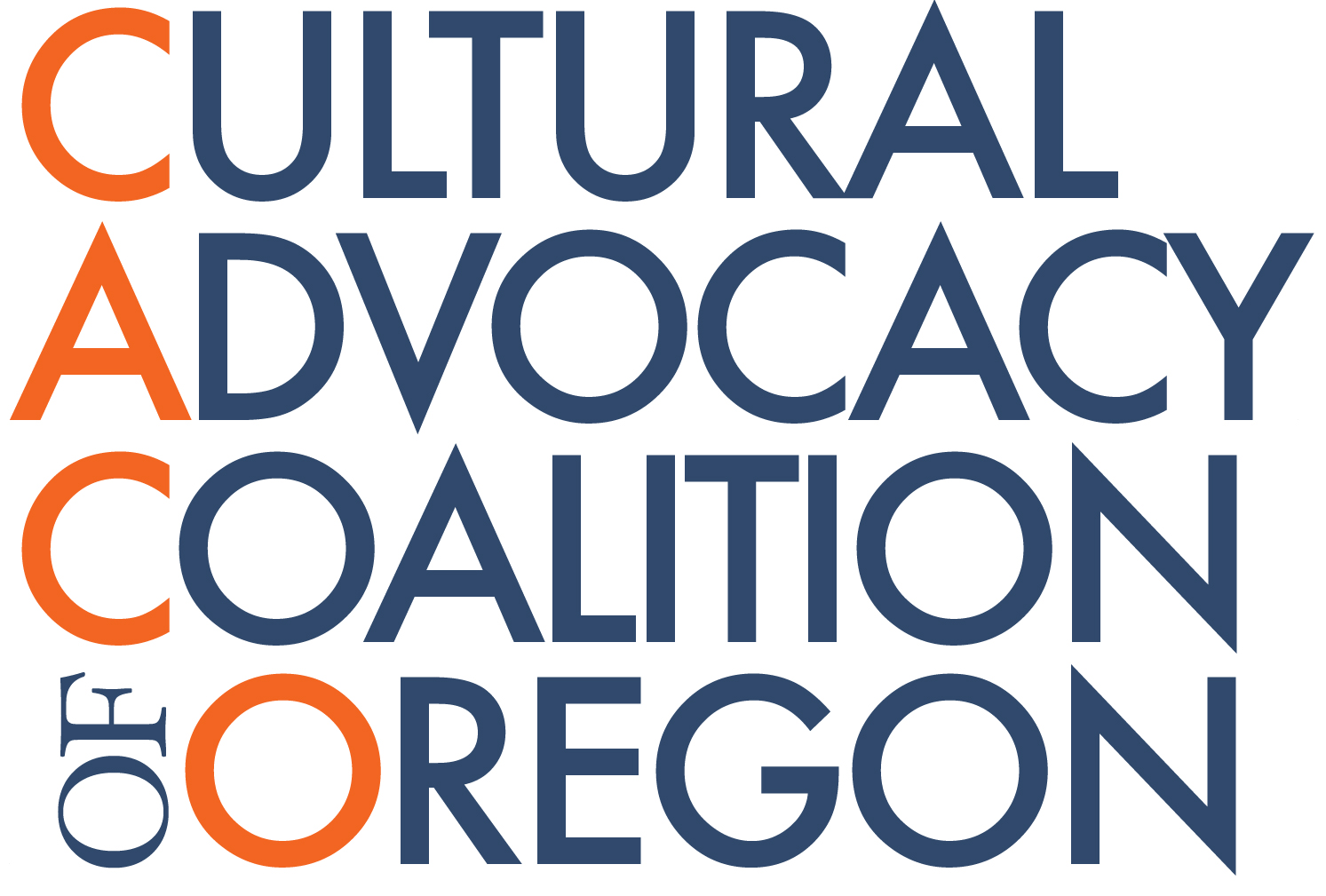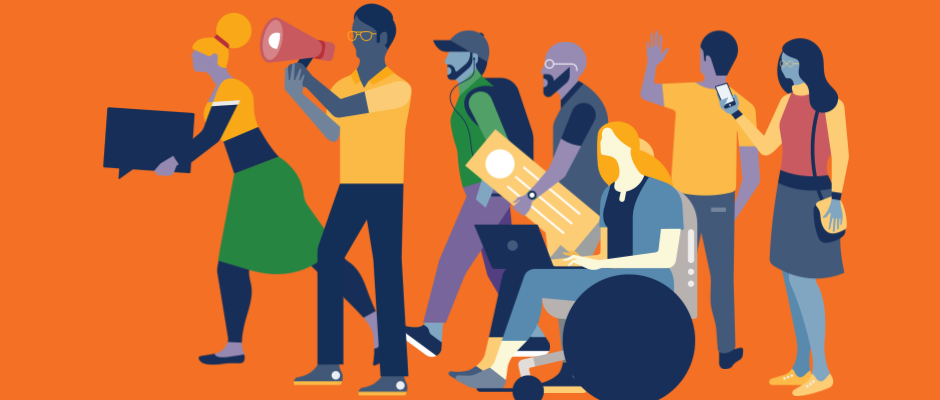Coalition Board of Directors member and Executive Director of the Crossroads Carnegie Art Center, Ginger Savage, breaks down advocacy work and leaves quick tips for moving your organization’s mission forward.
“I was thrilled to be asked to present at the Oregon Museum Association Annual Meeting in John Day this fall to share my ideas about how to get started on your advocacy journey,” said Savage. “I want to help more organizational leaders in the process of building relationships with elected officials and legislators, and help remove the “fear factor” associated with advocacy.”

First up, what is “advocacy?”
Simply put, advocacy is just communicating with key stakeholders about the good work you’re doing. It’s about sharing your message with policymakers, at ALL levels, about what you’re doing and how they can be part of that good work. Get clear about what your organization and staff role is in local, state and federal advocacy. Also, know what your ‘ask’ ultimetly is: Are you asking for financial or programmatic help from the public official? Is it something the public official can grant or assist with?
Your Sectors’ Story and Mission – Share how you and your partners are making our cities, counties, state, and even country better.
Being a good advocate is being your organization’s cheerleader! If you aren’t out telling those key stakeholders about important milestones and work you’re doing, who will? People think that advocacy is some scene from an old film noir with darkened back rooms, passed notes, and whispered conversations. When actually it’s running into a city councilman at a downtown event and arranging a coffee or lunch, or sending an invitation to your legislators to attend your main event, and then having your board members welcome and engage them in conversation.
The needs of Crossroads (where I work as the executive director) in rural Baker County, Oregon are different than the needs of large metropolitan arts organizations. I have to be the voice of the organization and share our message, and often advocacy is as simple as meeting your legislator. One connection or a meeting can go a long way in sharing your voice.
Awareness – What is impacting your mission?
Every arts organization is facing impacts to their mission that advocacy can have a role in fixing. Ask yourself, “who are my regional or local government partners who might help the timing of that street project or that grand opening of a new exhibit?” Know what’s impacting your mission and make people aware of how they can help.
Funding Streams – Whose budget is being cut? Whose is growing?
Building the relationship with city, county, state, and federal stakeholders allows you to understand their budget challenges or opportunities. It’s about communication and sharing messages about what your arts and/or cultural project is doing for the greater good of our community and region.
Consider what can you do and what can’t you do?
Advocacy is and should always be an offshoot of your daily workload. If you have major challenges, such as a new capital project in need for community or state investment, or even the challenges we have faced with wildfire smoke impacting the sector, these are ideal times when you might focus more energy on advocacy. Passionate board members can also help with advocacy of those larger projects, allowing staffers to get their regular work done. Having a coffee with the city manager for 30 minutes about street issues is not going to get you in trouble with any laws. But do understand the type of organization you are and the rules impacting your advocacy.
Capital Bonding
-
- What is capital bonding in Oregon for arts and culture and the Cultural Advocacy Coalition’s role in the process? The Coalition has taken a major role in the first round of “vetting” the applications for consideration by the legislature. As a member of the Capital Bonding Committee, my experience is that we are very similar to a grant panel. We look at the organization’s narrative, whether their budget is in line, do they show significant investment in the project, have they already done a lion share of the advocacy, have they built those basic relationships with partners and legislators, etc. If accepted, the Coalition, and our Lobbyist, Paul Cosgrove, give the approved applicants a boot camp in advocacy. Paul and the Coalition’s Senior Advisor, Sue Hildick, are there to help organizations navigate the process. Our goal is to get these projects approved, and we had monumental success in the 2019 legislative session. Read more about the 2019 legislative session and the projects that received funding.
- What are the steps forward in capital bonding for the short 2020 session and the long 2021 session? As a board member it is my understanding that bonding is much more challenging in a short session as there just isn’t time in the schedule. This may change…so please follow the Coalition, or consider becoming a member to get those updates. Contact a board member or our Senior Advisor, Sue Hildick for additional information, or sign up for Coalition news on our website.
3 FINAL TIPS:
Finally, here are three easy things you can do today to start advocacy work for your organization.
Database Management
Information is king. It’s extremely important to be organized and have information you need readily available to have positive interactions. Pro tip: Remember to always send thank you emails or notes. A strong database can help you track your gratitude.
Know the Gatekeepers
Your ability to gain access is dependent on your relationship with the “gatekeepers” to legislators or local officials. Those gatekeepers have many titles, administrative assistant or policy advisor, etc., the person who will set the appointment and who handles their calendar. They are key to getting time with these stakeholders. Respect the time limits! Send a quick note of thanks to the legislator and their staff after a visit. Remember their names and email them personally if there is an event that is very important for the legislator to attend.
Relationships are Everything, Build Them Before You Need Something
This one seems obvious, but we should always be building new connections and strengthening relationships. These come in handy when you need them the most. When the sewer backs up into your museum that is not the moment to “build” the relationship with your public works director. Advocacy is building relationships in the course of doing your job. Make advocacy a part of your daily work. It’s work that’s worth doing.

